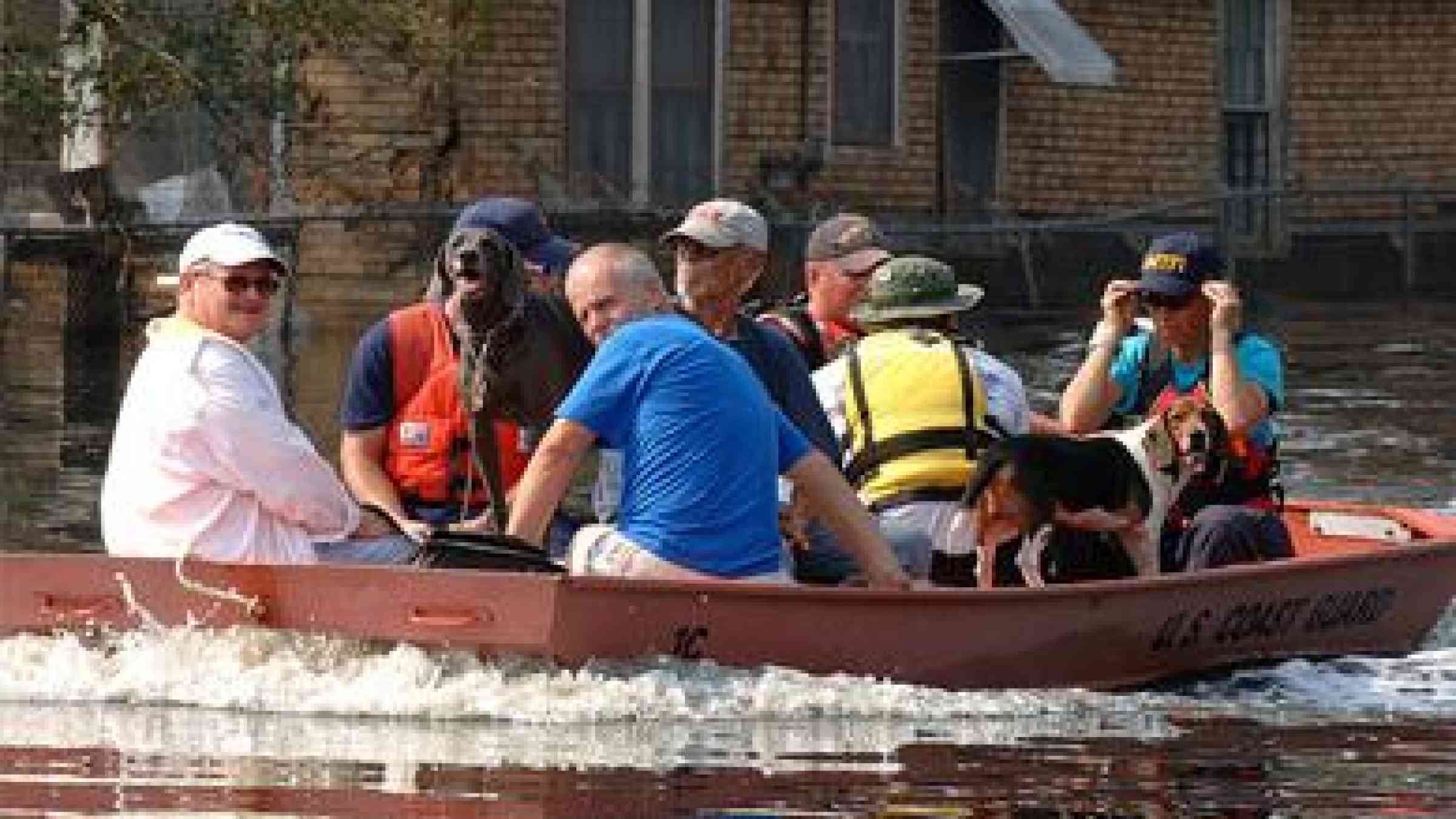Please help us improve PreventionWeb by taking this brief survey. Your input will allow us to better serve the needs of the DRR community.
Pets, livestock left out in the cold when disasters strike

by Kelly Garbato Fema 17688 CC BY-NC 2.0 https://www.flickr.com/photos/smiteme/221320837
By Megan Rowling:
London - If you live in a place prone to earthquakes, storms or floods, you probably have a stock of emergency provisions in your cupboard, and know where to go if an evacuation is ordered. But what would you do with your pets and other animals in a disaster?
While more than four fifths of city dwellers think it's necessary to make an emergency plan for animals, almost one in two do not have one, a survey from the London-based charity World Animal Protection showed on Wednesday.
In the poll of 3,000 people living in major cities in the United States, Brazil, India and Thailand, 54 percent said they thought disasters would become more frequent in future. And 61 percent said they would take their animals with them if they had to leave their homes in a crisis.
The lack of formal plans for evacuating animals is a problem in both richer and poorer countries, World Animal Protection said.
"Animals are just not on the radar for most standard emergency planners," said James Sawyer, the charity's international director of disaster management. But "people will go to great lengths to care for their animals - whether pets or livestock - in disasters, often putting their own lives at risk,” he added.
For example, after the 2010 eruption of Indonesia's Merapi volcano, the government created a 20km exclusion zone, ordering everyone to evacuate. Many people were forced to leave their animals behind, but came back to feed them, putting themselves in danger. The same often happens in the wake of earthquakes, if animals are left in damaged buildings.
When people displaced by disasters do take their animals with them, local authorities may not be prepared to accommodate them, Sawyer said. In the case of the 2011 Japan earthquake and tsunami, animals were not allowed in shelters. Owners had little choice but to abandon them, or try to protect them from freezing temperatures in their cars parked nearby.
ECONOMIC & PSYCHOLOGICAL BENEFITS
Sawyer said individuals and governments should include animals in disaster planning to minimise risks to both animals and humans, and ease psychological impacts on fragile populations already reeling from a crisis.
In poorer countries in particular, livestock are an important financial asset. Keeping them safe in an emergency can go a long way to helping communities bounce back, Sawyer said.
"Early intervention decreases (animal) mortality and maintains productivity, so there is an economic advantage. When rebuilding, (livestock) are a positive way of sustaining people's livelihoods and reducing aid dependency," he told Thomson Reuters Foundation.
Backyard animals such as poultry, pigs and cows are likely to become a bigger problem for emergency responders in urban areas in the coming decades, as more people migrate to cities, particularly in low-income nations, he added.
Governments have begun waking up to the issue, and some are taking measures to protect animals in disasters. India has asked state governments to incorporate animals into their disaster planning. And Costa Rica was the first to set up an emergency fund for animals last year, which has now topped $1 million, sourced from budget surpluses.
Local authorities and World Animal Protection have also carried out animal evacuation drills near a volcano in the Central American nation, using trucks and mobile loading ramps.
At the municipal level, authorities can set up separate shelters for animals, or set aside space for them in human evacuation centres, Sawyer said.
And individuals can take simple steps to prepare. These include keeping animals in good health with up-to-date vaccinations; putting together a kit with animal medicines; being able to identify animals using tags or microchips; and having ready a transport cage or box in case they need to be moved.
More information about World Animal Protection’s disaster work is online at http://animalsindisasters.typepad.com/
Explore further
Please note: Content is displayed as last posted by a PreventionWeb community member or editor. The views expressed therein are not necessarily those of UNDRR, PreventionWeb, or its sponsors. See our terms of use
Is this page useful?
Yes No Report an issue on this pageThank you. If you have 2 minutes, we would benefit from additional feedback (link opens in a new window).